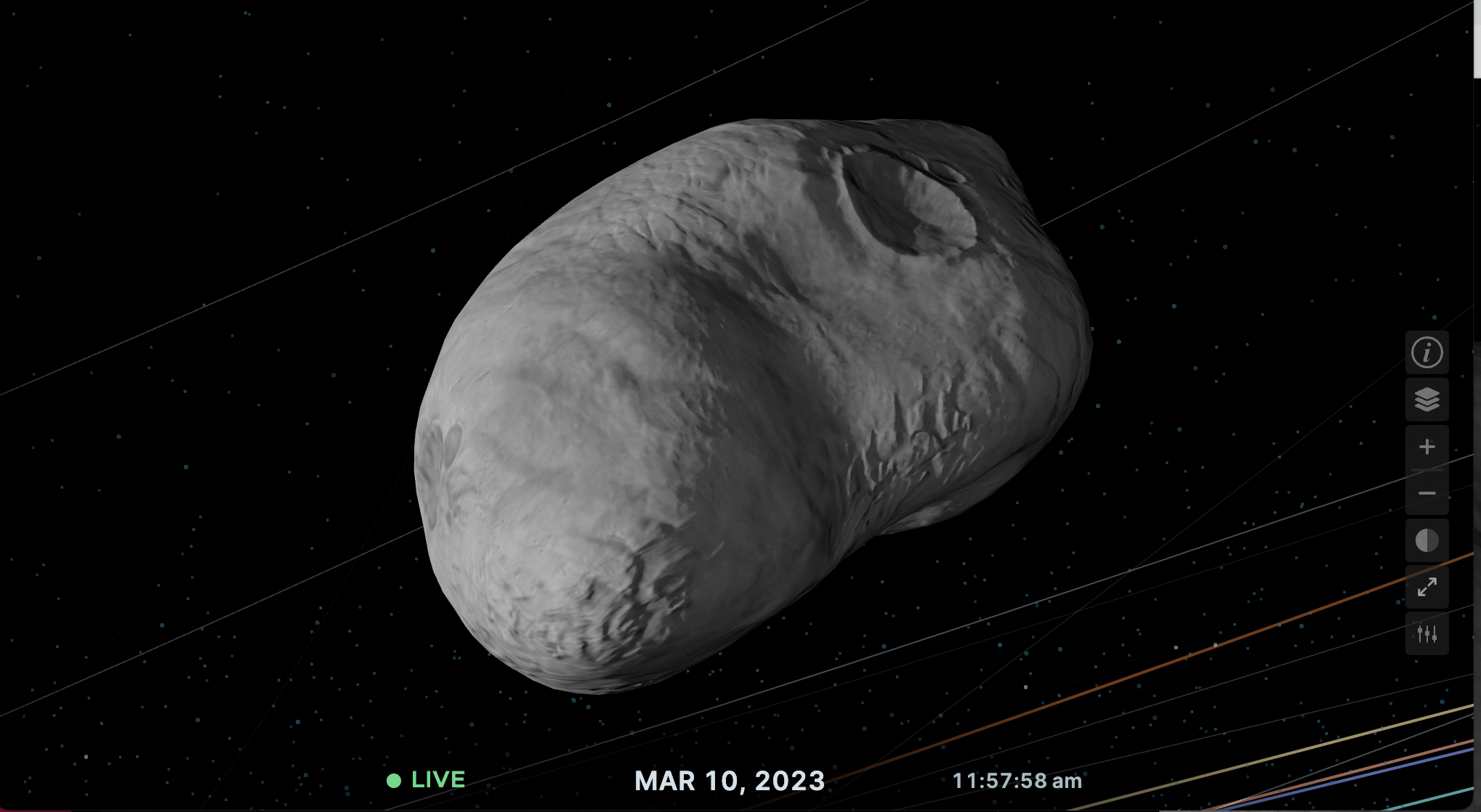
Chances are, you haven’t yet made your plans for Valentine’s day 2046. But just in case you’re thinking about it, you may want to make sure you spend the day indoors. That, at least, is the take home message from NASA’s Planetary Defense Coordination Office, which earlier this week sounded the alarm via Twitter that in just under 23 years, a newly discovered asteroid named 2023 DW—which measures 50 m (165 ft.) wide, or about the size of an Olympic swimming pool—will make a close swing by Earth, with a 1 in 560 chance of colliding with us.
That doesn’t sound like much, but 23 years is a lot of time for the rock to change its course, and since it was only spotted for the first time on Feb. 27, astronomers have a lot of additional observing to do before they can be certain of its future trajectory.
“Often when new objects are first discovered, it takes several weeks of data to reduce the uncertainties and adequately predict their orbits years into the future,” NASA’s tweet read in part. “Orbit analysts will continue to monitor asteroid 2023 DW and update predictions as more data comes in.”
Warnings about 2023 DW are flooding news sites today—including, well, this one. So how worried should you be?
For starters, there’s the size of 2023 DW to consider—which is not that big, but not that small either. It’s nowhere near the 12 km (7.5 mi.) wide asteroid—more than half the length of Manhattan—that wiped out the dinosaurs 65 million years ago. That’s the good news. The bad news is that a swimming pool sized piece of space rubble can still do a lot of damage. On Feb. 15, 2013, a projectile roughly half the size of 2023 DW exploded in the skies over Chelyabinsk, Russia, injuring 1,500 people and damaging more than 7,000 buildings.
NASA calculates the risk a near-Earth object poses of colliding with Earth on something known as the Torino scale, a zero to 10 ranking of the likelihood of impact, with zero representing no danger or, a risk “so low as to be effectively zero.” Five on the scale indicates “A close encounter posing a serious, but still uncertain risk, of regional devastation.” Ten—which the dinosaurs could tell you about if they weren’t all dead—indicates that “a collision is certain, capable of causing global climatic catastrophe that may threaten the future of civilization as we know it.”
So where does 2023 DW rank? For now, NASA puts it at a one, indicating “a routine discovery in which a pass near the Earth is predicted that poses no unusual level of danger.” For now, that pass near the Earth will be no closer than 7.5 million km (4.65 million mi.), according to NASA’s Eyes on Asteroids website. That’s 18 times farther than the moon is from Earth.
But 2023 DW’s distance could change, as NASA itself admits, as further observations of the space rock are conducted and its trajectory is more finely calculated. What’s more, Feb. 14, 2046 will not be the only time 2023 DW swings by our way. The asteroid will make nine more potentially close passes from Feb. 15, 2047 to Feb. 14, 2054.
None of this is cause for serious alarm. Rather, all of it is cause for celebration of the success of NASA’s Double Asteroid Redirection Test (DART), which last September successfully crashed a small spacecraft into the asteroid moonlet Dimorphos, to see how much it could change the speed of its orbit around its parent asteroid Didymos. The mission—which was a first test of the kind of asteroid deflection defense that could be used to protect the Earth from an incoming space rock—worked spectacularly. To be considered a success, mission planners determined that the orbit of Dimorphos would have to speed up by at least 73 seconds. The actual acceleration? Thirty-two minutes.
“This mission shows that NASA is trying to be ready for whatever the universe throws at us,” said NASA Administrator Bill Nelson when the results were released. “NASA has proven we are serious as a defender of the planet.”
Nobody believes that a DART-type mission will be necessary to protect Earth from 2023 DW—at least not yet. But other cosmic ordnance lurks—and other defense systems must continue to be in the pipeline. The solar system has always been a shooting gallery—and Earth will always be at risk of winding up in the crosshairs.
More Must-Reads from TIME
- Why Biden Dropped Out
- Ukraine’s Plan to Survive Trump
- The Rise of a New Kind of Parenting Guru
- The Chaos and Commotion of the RNC in Photos
- Why We All Have a Stake in Twisters’ Success
- 8 Eating Habits That Actually Improve Your Sleep
- Welcome to the Noah Lyles Olympics
- Get Our Paris Olympics Newsletter in Your Inbox
Write to Jeffrey Kluger at jeffrey.kluger@time.com